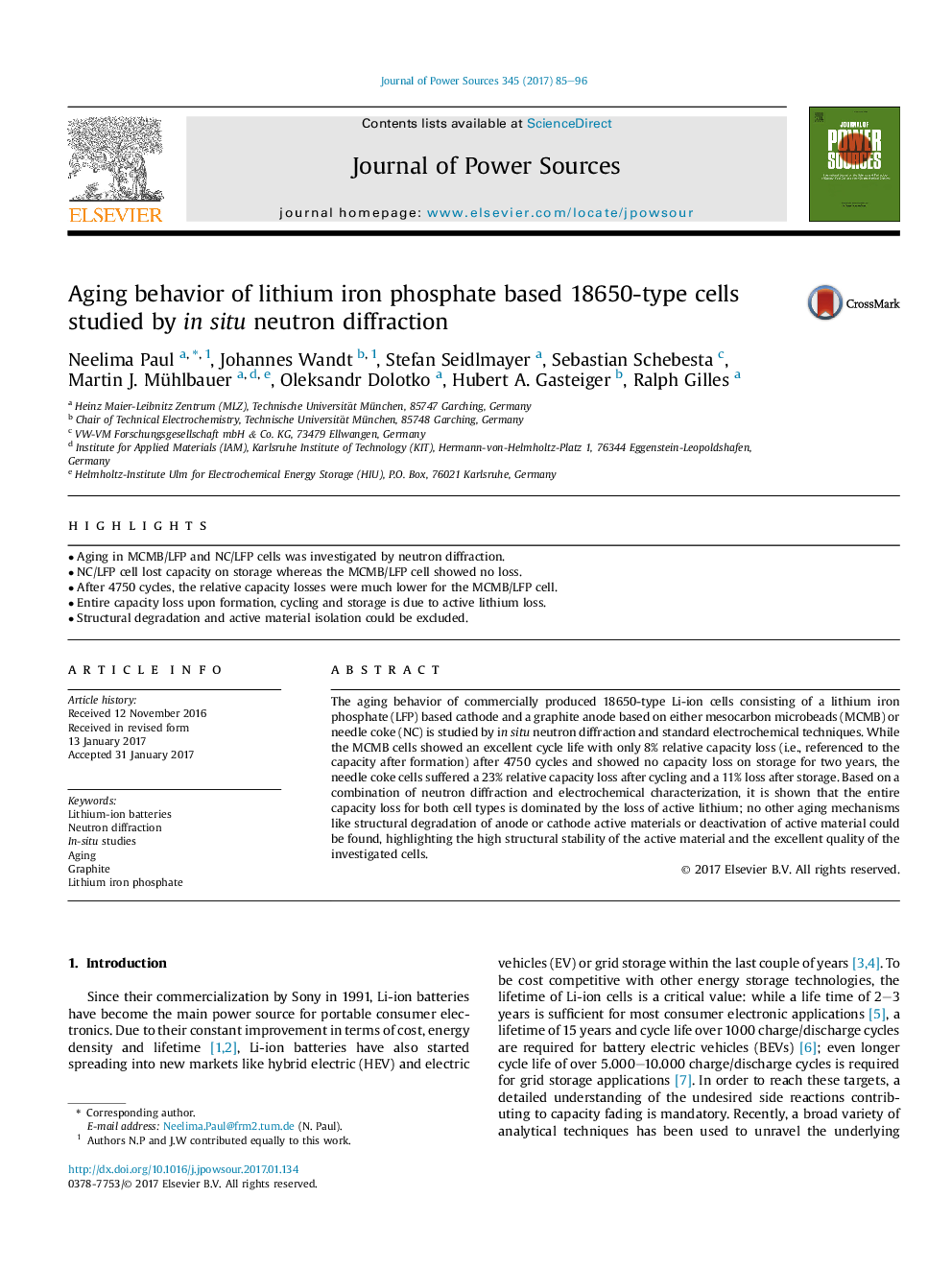| Article ID | Journal | Published Year | Pages | File Type |
|---|---|---|---|---|
| 5149584 | Journal of Power Sources | 2017 | 12 Pages |
Abstract
The aging behavior of commercially produced 18650-type Li-ion cells consisting of a lithium iron phosphate (LFP) based cathode and a graphite anode based on either mesocarbon microbeads (MCMB) or needle coke (NC) is studied by in situ neutron diffraction and standard electrochemical techniques. While the MCMB cells showed an excellent cycle life with only 8% relative capacity loss (i.e., referenced to the capacity after formation) after 4750 cycles and showed no capacity loss on storage for two years, the needle coke cells suffered a 23% relative capacity loss after cycling and a 11% loss after storage. Based on a combination of neutron diffraction and electrochemical characterization, it is shown that the entire capacity loss for both cell types is dominated by the loss of active lithium; no other aging mechanisms like structural degradation of anode or cathode active materials or deactivation of active material could be found, highlighting the high structural stability of the active material and the excellent quality of the investigated cells.
Related Topics
Physical Sciences and Engineering
Chemistry
Electrochemistry
Authors
Neelima Paul, Johannes Wandt, Stefan Seidlmayer, Sebastian Schebesta, Martin J. Mühlbauer, Oleksandr Dolotko, Hubert A. Gasteiger, Ralph Gilles,
